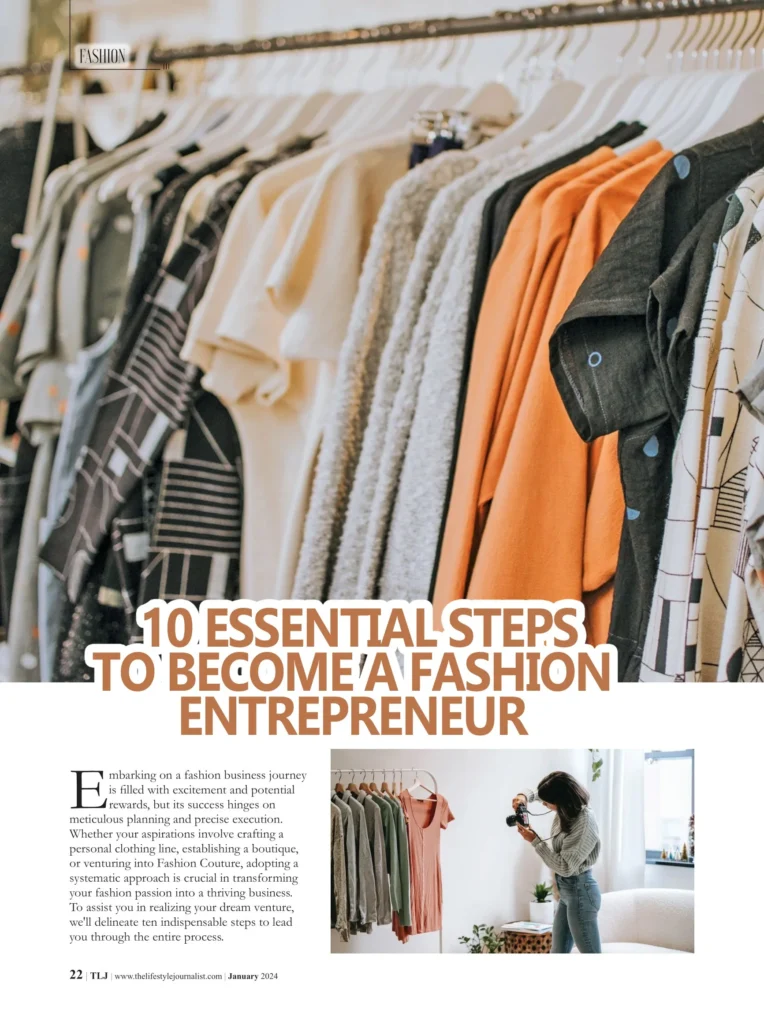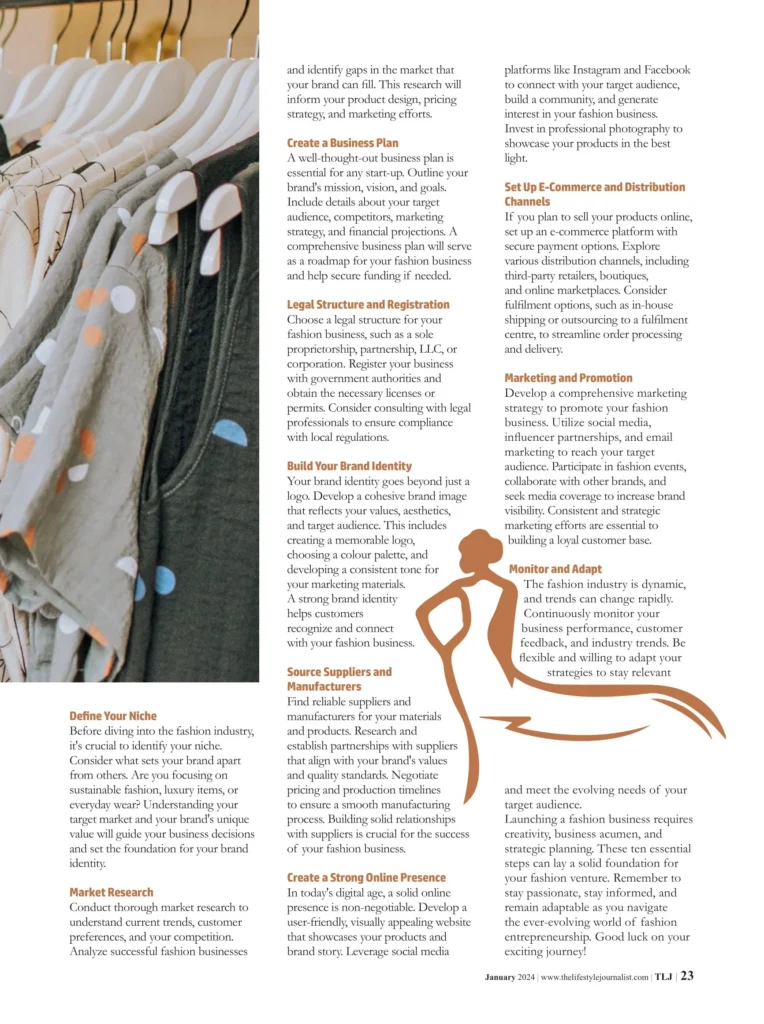Embarking on a fashion business journey is filled with excitement and potential rewards, but its success hinges on meticulous planning and precise execution. Whether your aspirations involve crafting a personal clothing line, establishing a boutique, or venturing into Fashion Couture, adopting a systematic approach is crucial in transforming your fashion passion into a thriving business. To assist you in realizing your dream venture, we’ll delineate ten indispensable steps to lead you through the entire process.
Define Your Niche
Before diving into the fashion industry, it’s crucial to identify your niche. Consider what sets your brand apart from others. Are you focusing on sustainable fashion, luxury items, or everyday wear? Understanding your target market and your brand’s unique value will guide your business decisions and set the foundation for your brand identity.

Market Research
Conduct thorough market research to understand current trends, customer preferences, and your competition. Analyze successful fashion businesses and identify gaps in the market that your brand can fill. This research will inform your product design, pricing strategy, and marketing efforts.
Create a Business Plan
A well-thought-out business plan is essential for any start-up. Outline your brand’s mission, vision, and goals. Include details about your target audience, competitors, marketing strategy, and financial projections. A comprehensive business plan will serve as a roadmap for your fashion business and help secure funding if needed.
Legal Structure and Registration
Choose a legal structure for your fashion business, such as a sole proprietorship, partnership, LLC, or corporation. Register your business with government authorities and obtain the necessary licenses or permits. Consider consulting with legal professionals to ensure compliance with local regulations.

Build Your Brand Identity
Your brand identity goes beyond just a logo. Develop a cohesive brand image that reflects your values, aesthetics, and target audience. This includes creating a memorable logo, choosing a colour palette, and developing a consistent tone for your marketing materials.
A strong brand identity helps customers recognize and connect with your fashion business.
Source Suppliers and Manufacturers
Find reliable suppliers and manufacturers for your materials and products. Research and establish partnerships with suppliers that align with your brand’s values and quality standards. Negotiate pricing and production timelines to ensure a smooth manufacturing process. Building solid relationships with suppliers is crucial for the success of your fashion business.
Create a Strong Online Presence
In today’s digital age, a solid online presence is non-negotiable. Develop a user-friendly, visually appealing website that showcases your products and brand story. Leverage social media platforms like Instagram and Facebook to connect with your target audience, build a community, and generate interest in your fashion business. Invest in professional photography to showcase your products in the best light.

Set Up E-Commerce and Distribution Channels
If you plan to sell your products online, set up an e-commerce platform with secure payment options. Explore various distribution channels, including third-party retailers, boutiques, and online marketplaces. Consider fulfilment options, such as in-house shipping or outsourcing to a fulfilment centre, to streamline order processing and delivery.
Marketing and Promotion
Develop a comprehensive marketing strategy to promote your fashion business. Utilize social media, influencer partnerships, and email marketing to reach your target audience. Participate in fashion events, collaborate with other brands, and seek media coverage to increase brand visibility. Consistent and strategic marketing efforts are essential to building a loyal customer base.
Monitor and Adapt
The fashion industry is dynamic, and trends can change rapidly. Continuously monitor your business performance, customer feedback, and industry trends. Be flexible and willing to adapt your strategies to stay relevant and meet the evolving needs of your target audience.
Launching a fashion business requires creativity, business acumen, and strategic planning. These ten essential steps can lay a solid foundation for your fashion venture. Remember to stay passionate, stay informed, and remain adaptable as you navigate the ever-evolving world of fashion entrepreneurship. Good luck on your exciting journey!



